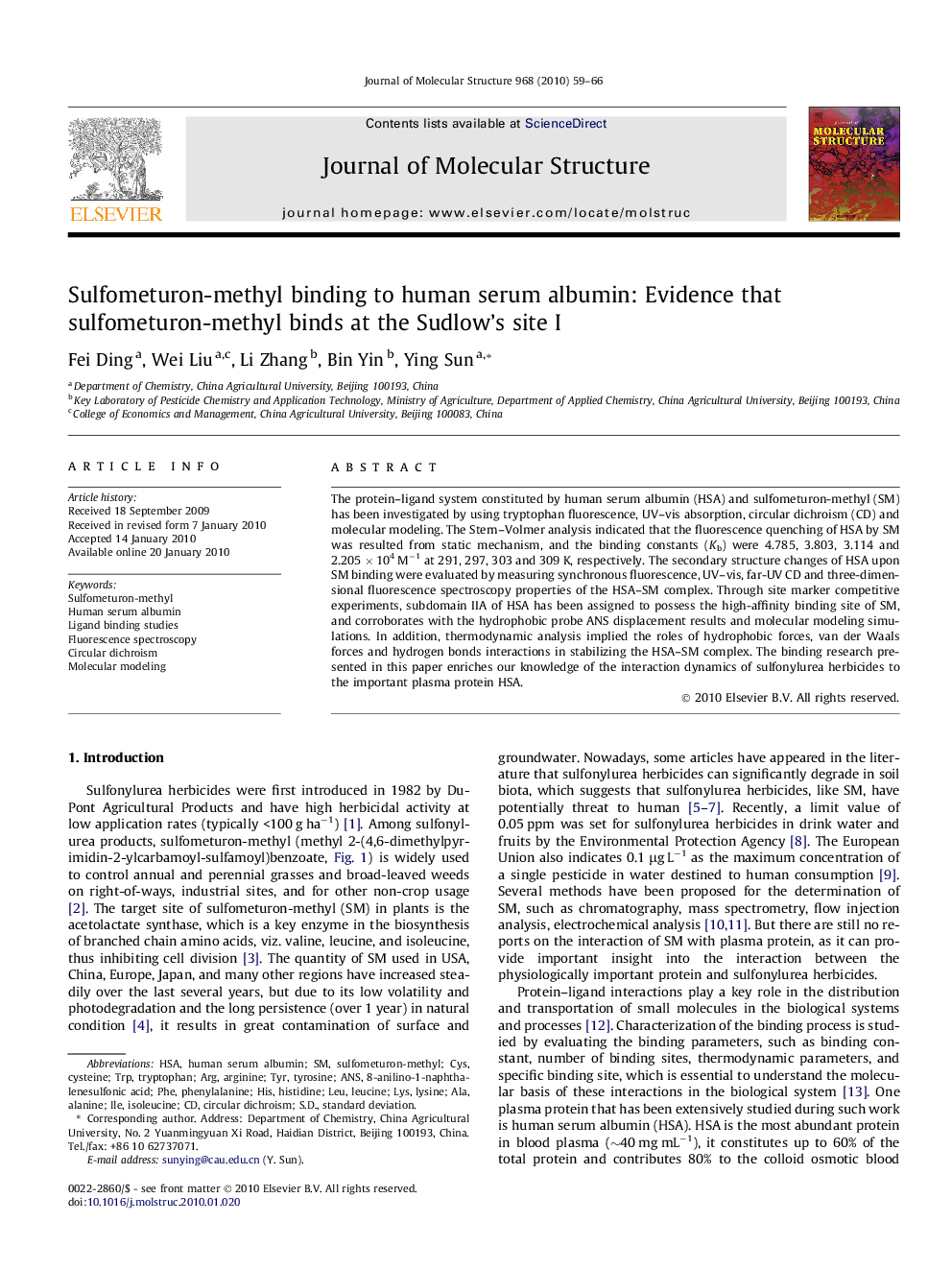| Article ID | Journal | Published Year | Pages | File Type |
|---|---|---|---|---|
| 1406383 | Journal of Molecular Structure | 2010 | 8 Pages |
The protein–ligand system constituted by human serum albumin (HSA) and sulfometuron-methyl (SM) has been investigated by using tryptophan fluorescence, UV–vis absorption, circular dichroism (CD) and molecular modeling. The Stern–Volmer analysis indicated that the fluorescence quenching of HSA by SM was resulted from static mechanism, and the binding constants (Kb) were 4.785, 3.803, 3.114 and 2.205 × 104 M−1 at 291, 297, 303 and 309 K, respectively. The secondary structure changes of HSA upon SM binding were evaluated by measuring synchronous fluorescence, UV–vis, far-UV CD and three-dimensional fluorescence spectroscopy properties of the HSA–SM complex. Through site marker competitive experiments, subdomain IIA of HSA has been assigned to possess the high-affinity binding site of SM, and corroborates with the hydrophobic probe ANS displacement results and molecular modeling simulations. In addition, thermodynamic analysis implied the roles of hydrophobic forces, van der Waals forces and hydrogen bonds interactions in stabilizing the HSA–SM complex. The binding research presented in this paper enriches our knowledge of the interaction dynamics of sulfonylurea herbicides to the important plasma protein HSA.
